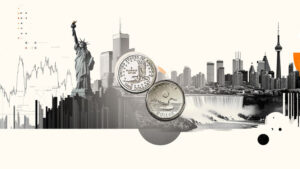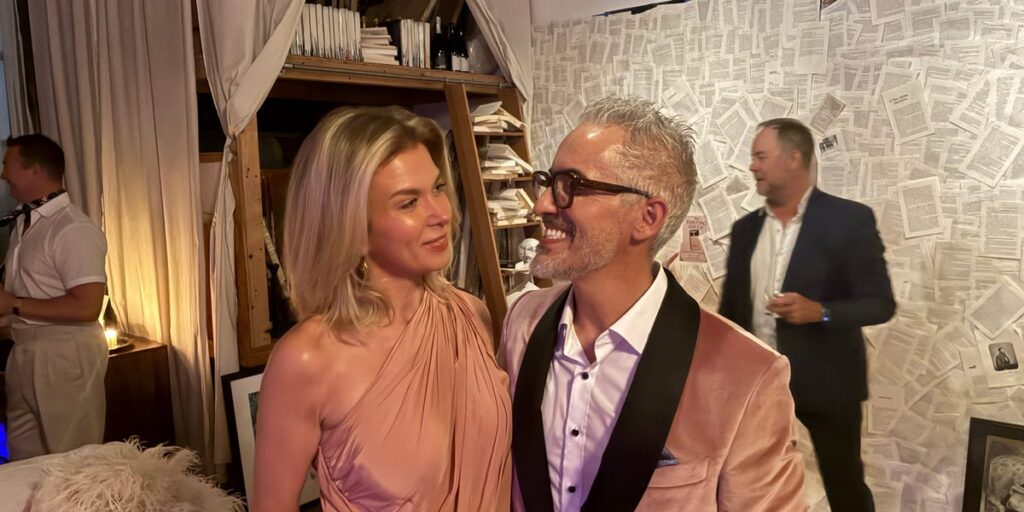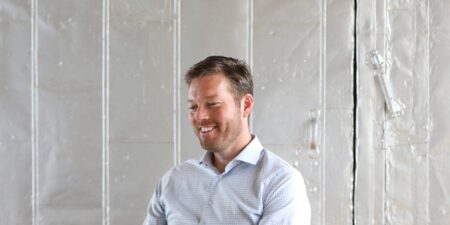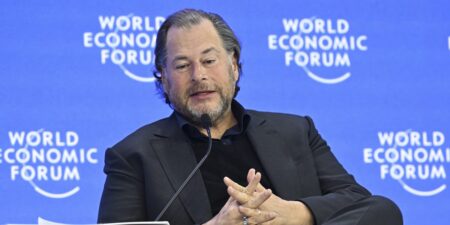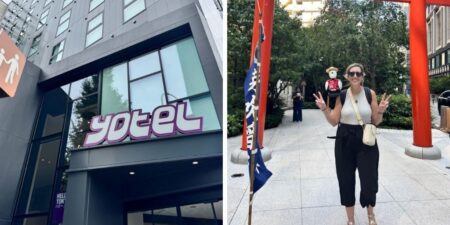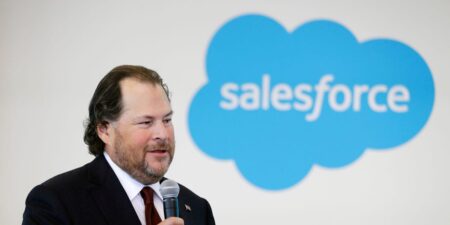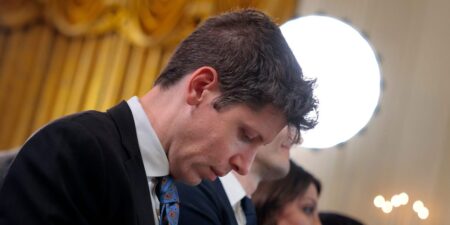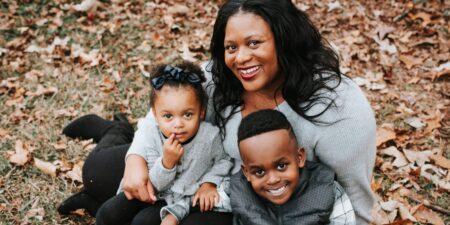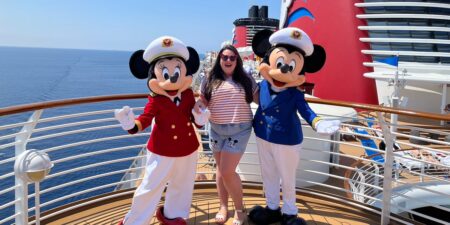Jascha Kaykas-Wolff is a veteran Silicon Valley executive who’s seen waves of different technology sweep across the industry as CMO of Mozilla, BitTorrent, and other companies.
This time, generative AI is the hot new thing. There’s a healthy debate right now over whether this technology is truly valuable for end users or not. Kaykas-Wolff’s hands-on experience is instructive here.
He and his partner, the artist Alexandra Roberts, created a high-end, cannabis-infused cocktail that launches in early 2026. It’s called “Eleanore,” part of a broader brand they’re developing to take pot products from stinky, bong-filled basements into more luxurious environments such as private clubs, wine bars, and cocktail lounges.
A few years ago, an endeavor like this would have taken at least six months, cost up to $500,000, and required multiple agencies and contractors. Instead, Kaykas-Wolff and his partner are mostly using AI tools, including ChatGPT, Claude, ElevenLabs, and Lovable. That’s helped them move faster and save a lot of money.
“We reached the same point in about four weeks for less than 10% of the cost,” Kaykas-Wolff told me.
Here’s how they’ve been using AI tools to get their Eleanore cocktail off the ground. This Q&A has been edited for length and clarity.
What AI tools did you use to create the website and other marketing materials for this product?
We never treated AI as a gimmick. It is our team. It collaborates with us across strategy, creativity, and execution, and it’s still doing so as we design brand extensions and physical retail experiences.
We’ve built almost every part of Eleanore with AI. Our core toolset starts with ChatGPT, and we also use Claude and Claude Code. The combination of all three allows us to take advantage of the multimodal intelligence that emerges when they feed off one another. This setup lets us move fluidly between creative and technical work. ElevenLabs powers our voice experiments, and Lovable has been the backbone for our web presence.
From top to bottom, we operate through multiple customized GPTs. Alexandra’s primary GPT is named Tilda; mine is Ferris. Alexandra leads all of Eleanore’s creative direction in partnership with Tilda, treating her like an extension of her sketchbook. She feeds in original drawings, textures, and mood references, then iterates until we land on the aesthetic that feels true to Eleanore. Together, they and other GPT partners have developed the brand guide, visual assets, typography, and even the interaction patterns for the site.
Ferris functions as our business partner. It manages outreach to vendors and co-manufacturers, models the market, tracks legislative shifts, and maps competitors.
ChatGPT drives brand architecture, positioning language, SEO, and business research. Claude focuses on financial modeling and P&L management. Together, they support product R&D as we co-develop with partners. Lovable builds and maintains the site with deep integrations into Mailchimp, and other operational stacks. ElevenLabs helps us explore the brand’s audio identity.
Beyond creative work, we’ve used AI to identify terpene mixes, essentially acting as our chemist, AI has supported bottling estimations and R&D research, and AI has helped connect us with Process Authorities, Bottle manufacturers, and enclosure designers. We have even used AI to develop technical schematics for our packaging and physical products. For operations, Willow Voice for transcription, Fathom records our meetings, AssemblyAI handles transcription, and Zapier automates communications and scheduling.
How did you build these custom GPTs, Tilda and Ferris?
We built Tilda and Ferris on top of OpenAI’s and Anthropic’s foundation models. They are not just chatbots; they are trained agents tuned to specific creative and operational domains.
Tilda is Alexandra’s creative partner. She’s been fine-tuned through hundreds of prompts, visual references, and brand assets to understand Eleanore’s design language and emotional tone. Tilda generates and critiques visual concepts, explores typography and color systems, and helps translate Alexandra’s sketches and textures into digital form.
Ferris functions as our operations and strategy partner. He’s trained on our internal business data, vendor research, and financial frameworks. Ferris runs market analysis, models profit and loss statements, manages outreach workflows, and coordinates with other AI systems including Claude and Lovable.
We built both using a layered approach: the base models provide reasoning and language generation, while our custom memory layers include MCPs and structured prompts at the project level to create persistent context. They act more like AI collaborators than traditional assistants. Autonomous enough to handle entire workflows, but always under human direction.
What tools would you have used for the Eleanore project four years ago, before generative AI?
If we had started Eleanore four years ago, before generative AI, the truth is we probably would not have built it. The approach we would have needed then was cost-prohibitive.
That process would have been slower, more linear, and heavily dependent on external specialists such as designers, web developers, industry consultants, and accountants. In both of our past experiences, creative iteration was expensive, time-bound, and resource-constrained. The old way forced a waterfall-style workflow that demanded early, often irreversible decisions instead of encouraging exploration.
AI collapsed all of that. Instead of briefing a designer, waiting a week, then revising, we can move from concept to execution in hours. Instead of being overwhelmed by the idea of launching a new product line, we can brainstorm, research, understand the competitive landscape, and identify partners in hours, not weeks. The barrier between vision and output has essentially disappeared.
Alexandra often says that four years ago, she would have been translating her vision for other people to build. Now she is building it herself, directly, with her AIs.
What were the main differences between creating these assets now and doing so with traditional creative tools?
The biggest difference now is speed and depth of iteration. Before generative AI, creative development was mostly about execution, which meant refining something that already existed. With AI, it is about discovery.
We no longer start from a blank page. Every new idea begins as a dialogue between us and our AIs. We can test multiple creative directions, model the business impact of each, and see what a launch might look like, all within a single working session.
Another major shift is that AI has blurred the line between creative and analytical work. In the past, those were separate lanes. Designers handled aesthetics. Strategists handled positioning. Analysts handled numbers. Now those processes are integrated. We can build a model and a packaging concept in the same workflow, informed by the same data and research.
In practical terms, this means we can experiment with creative risk while staying grounded in business logic. The tools do not replace taste or intuition; they amplify them.
What products would you have used before? How long would it have taken? How much would it have cost?
Before generative AI, we would have used the standard stack for digital brand creation: Adobe Creative Suite for design, Webflow or Squarespace for the site, Figma for prototypes, Mailchimp for CRM, and Google Analytics for tracking. Each piece of that required a different specialist — a designer, a web developer, a UX lead, and often a brand strategist or copywriter to tie it all together.
For a project at the level of Eleanore, that team would likely have included five to seven people working for three to four months. Costs would easily have reached between $75,000 and $150,000 for brand identity, site design, and launch collateral alone, stretching much higher once packaging, product R&D, and compliance were added.
Compare that time, cost, and resource load with today.
Compared with the traditional process, we have saved extraordinary amounts of time, money, and human effort.
In the past, a project like Eleanore would have required at least six months of work and a total budget of $300,000 to $500,000 to cover brand development, design, formulation, compliance, packaging, photography, and marketing materials. It also would have required multiple agencies and contractors: creative, web, brand strategy, product design, and financial modeling.
Today, using AI, we reached the same point in about four weeks for less than 10% of that cost. Nearly every stage was moved through with our customized GPTs, relying on external partners only for physical production elements such as flavor design.
The difference is not only speed and cost. It is leverage. The same creative and operational energy now scales exponentially because AI handles the heavy lift between idea and execution.
Any issues with these new tools? Anything that was better with older ones?
The new tools are powerful, but not perfect. The biggest challenge is trust. AI tools move quickly and produce confident answers even when they are wrong. We hear a quote from a Google AI Ethicist not too long ago: “AI is like a teenager. Confident in everything and wrong a lot of the time.’ You have to stay skeptical, validate every critical output, and constantly test assumptions.
Another issue is overfitting to your own inputs. The more you fine-tune and feed your systems, the more they reflect your worldview. That is useful for consistency, but it can narrow creative range if you do not intentionally push for outside perspectives.
Traditional creative tools had friction built in. Teams reviewed, debated, and re-interpreted each other’s work. That friction often made the work better. Today, everything moves so fast that you have to create your own checkpoints to make sure you are still seeing clearly.
We have also learned that some things are still better by hand. Photography and the physical aspects of brand identity need human texture. AI can simulate feel, but it cannot generate the subtlety that comes from lived experience.
For Lovable specifically, did you keep using it?
We still use Lovable every day. It has become part of our operating stack rather than a one-time build tool.
We originally used it to launch the Eleanore site, but since then we have expanded its role. We integrated it with Cloudflare for performance and security, and connected it to our backend databases for dynamic content and analytics. Lovable’s new Lovable Cloud handles scale, uptime, and caching exceptionally well.
We kept the subscription because the platform keeps improving and it lets us make changes instantly. We can update the site, test campaigns, add content, or connect to new services without relying on developers or agencies. That agility is invaluable.
What’s the main takeaway for Business Insider readers?
The main takeaway is that AI has turned small, creative teams into full-scale operators. What used to require entire departments can now be done by two people who understand how to collaborate with these systems.
AI does not just make work faster. It changes what is possible. It lets you explore ideas you would have abandoned before because of time, cost, or expertise. The technology removes friction between creativity and execution, which means more people can build ambitious things with fewer resources.
For us, Eleanore is proof of that shift. Two people built a premium brand, from strategy to voice, from web to R&D, using tools that anyone can access. The lesson is that AI will not replace creativity. It expands it.
Anything we missed here?
The only thing worth adding is that this process has changed how we think about company building. AI has collapsed the distance between idea and operation. It has made it possible for founders, artists, and small teams to operate with the same precision and reach as large organizations.
Eleanore has been both a creative project and a systems experiment. We are testing how far human-AI collaboration can go when the tools are treated as true partners rather than assistants. So far, the answer is very far.
Sign up for BI’s Tech Memo newsletter here. Reach out to me via email at [email protected].
Read the full article here



